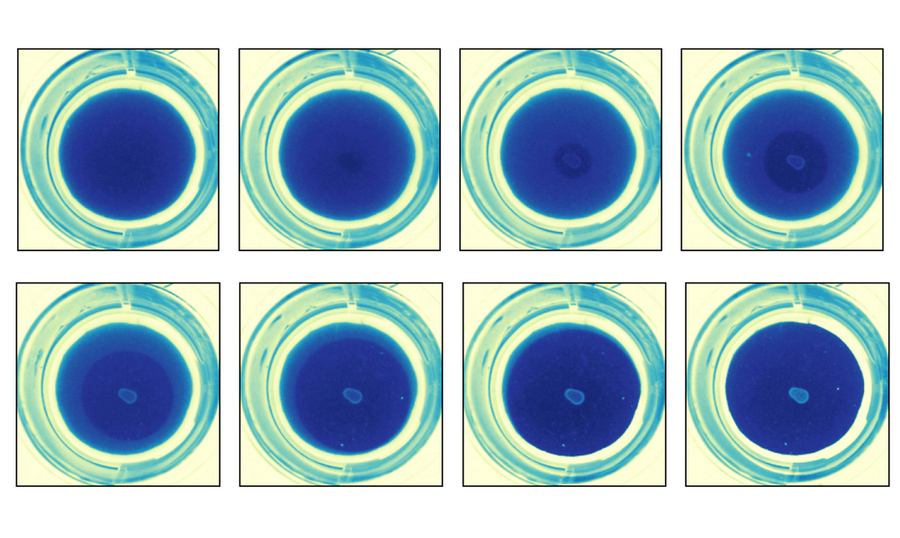MIT researchers work to discover biodegradable polyesters, with support from the MIT Climate and Sustainability Consortium, J-WAFS, and DIC Corp.

Advancing Material Innovation to Address the Polymer Waste Crisis: Products made from polymers — ranging from plastic bags to clothing to cookware to electronics — provide many comforts and support today’s standard of living, but since they do not decompose easily, they pose long-term environmental challenges. Developing polymers, a large class of materials, with a more sustainable life cycle is a critical step in making progress toward a green economy and addressing this piece of the global climate change crisis. The development of biodegradable polymers, however, remains limited by current biodegradation testing methods.
To address this limitation, a team of MIT researchers led by Bradley D. Olsen, the Alexander and I. Michael Kasser (1960) Professor in the Department of Chemical Engineering, has developed an expansive biodegradation dataset to help determine whether or not a polymer is biodegradable.
Their findings were recently published in The Proceedings of the National Academy of Sciences (PNAS), a peer reviewed journal of the National Academy of Sciences (NAS), in a paper titled “High-Throughput Experimentation for Discovery of Biodegradable Polyesters.” The MIT team is led by Olsen and PhD candidates Katharina A. Fransen and Sarah H. M. Av-Ron, and also includes postdoc Dylan J. Walsh and undergraduate students Tess R. Buchanan, Dechen T. Rota, and Lana Van Note.
“Despite polymer waste being a known and significant contributor to the climate crisis, the study of polymer biodegradation has been limited to a small number of polymers because current biodegradation testing methods are time- and resource-intensive,” says Olsen. “This limited scope slows new material innovation, so we are working to open that up to a much broader portfolio of materials.”
Unique high-throughput approach
Advancing Material Innovation to Address the Polymer Waste Crisis: The dataset Olsen’s team has developed, with support from the MIT Climate and Sustainability Consortium (MCSC), the Abdul Latif Jameel Water and Food Systems Lab (J-WAFS), and DIC Corporation, includes more than 600 distinct polyester chemistries.
“The ingenuity of our work is pushing the screening to be high-throughput, which accelerates the pace of discovery,” says Av-Ron. High-throughput synthesis methods enable large quantities of samples to be screened rapidly, identifying products with the desired property or function you are looking for. In this case, the high-throughput approach was conducted using a method called clear-zone assay, which detects polymer biofragmentation and identifies polymer degrading bacteria. The biodegradation dataset can then lead to structure-property relationships, a concept central to materials science and engineering, where relationships between the chemical detail and property can be established, and used to build a biodegradation prediction model. When developing these models to predict biodegradation, the researchers were interested in looking into the potential linearity and nonlinearity of the relationships between structure and biodegradability.
“We consider our scientific breakthrough to be having this large dataset, and the qualitative relationships and predictive models such a substantial amount of data enabled,” adds Av-Ron. “It was captivating to figure out how to integrate the high complexity of polymer chemical representation with predictive machine-learning models. I was very excited to get a validation accuracy of 82 percent for one representation/model combination. With additional data we might be able to improve our predictions even more.”
The team’s work focuses largely on polyesters; the development of biodegradable polyesters presents a key opportunity for addressing the polymer sustainability crisis and reducing the environmental burden of the polymer life cycle.
One strain of bacteria, many chemistries
Advancing Material Innovation to Address the Polymer Waste Crisis: The biodegradation test that these data create is accessible and cost-effective to put in place; initial industry feedback has been positive. The datasets are also more reproducible than many other standards in this space.
“With our method, there is one strain of bacteria, so you know exactly what you’re testing,” says Av-Ron. This speaks to the uniqueness of the team’s approach.
“When polymers are developed, normally the strength of the material is examined first, and then once the material is developed, whether or not it biodegrades comes second,” says Fransen.
Olsen and his team are examining the opposite — developing the biodegradability screen first, to help filter and focus what to look for in a material. This way, the team’s infrastructure can assess a lot of different options, quickly.
“There has been big movement recently in developing sustainable polymers,” concludes Fransen, “and having something like this that is quick, tangible, and relatively inexpensive, could add a lot of value to that community.”
Fransen received a 2022 J-WAFS Fellowship for this work, and she and Av-Ron together won second place in the 2022 J-WAFS World Food Day Student Video Competition, as this research can be applied to creating more sustainable food packaging.
Advancing Material Innovation to Address the Polymer Waste Crisis: Original Article










